Army Strong:
CSU pioneering new Army Combat Fitness Training Plan for the scholar-athlete-leader
story and video by Joe Giordano
photos by John Eisele
published Nov. 11, 2019
Army Strong:
CSU pioneering new Army Combat Fitness Training Plan for the scholar-athlete-leader story and video by Joe Giordano photos by John Eisele published Nov. 11, 2019For more than 30 years, the U.S. Army has tested the strength and endurance of its soldiers through a battery of pushups, sit-ups and a two-mile run known as the Army Physical Fitness Test.
But soon the Army will replace this legacy test with a new gender- and age-neutral assessment consisting of six events — deadlifts, farmer’s carries, sled pulls and much more — that will impact personnel around the globe as well as right here at Colorado State University.
To prepare for the change coming in October 2020, CSU’s Army ROTC program is part of a pioneering study with the Department of Health and Exercise Science that examines the most effective training plans for the new Army Combat Fitness Test.
Lt. Col. Troy Thomas, commander of Army ROTC programs at CSU and the University of Northern Colorado, has personally endorsed the study and encouraged his cadre to pursue the most effective protocol for the 150 cadets, 28% of whom are female.
“On average, we have about seven contact hours per week with our cadets, and less than half of those hours are dedicated to physical fitness,” he said. “What we discover as the best protocol will elicit the most efficient and effective results of those three hours to achieve our scholar-athlete-leader outcomes.”
The research so far suggests hybrid training as the most effective option, and it has attracted attention and support from the U.S. Army and U.S. Department of Defense. According to the researchers involved in the study, it also could have a profound impact in helping U.S. Army Cadet Command prescribe fitness regimens to help ROTC cadets train for the new test.
“Colorado State is at the cutting edge of producing a combat fitness protocol for a very select population,” said Al Armonda, a CSU military science instructor who helped lead the study. “This falls well within our land-grant mission in filling a gap in the force that the Army needs.”
Army Combat Fitness Test events
Three of six events to be adopted by October 2020. Animated images by Brian Dusek.
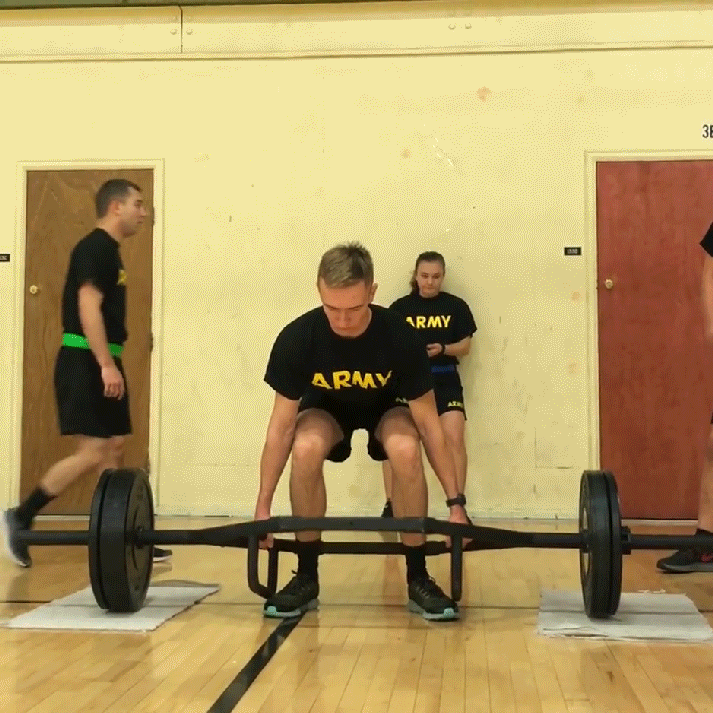
Maximum Deadlift
A three-repetition deadlift with a 60-pound hex bar and plates that represents movements required to safely and effectively lift heavy loads from the ground.
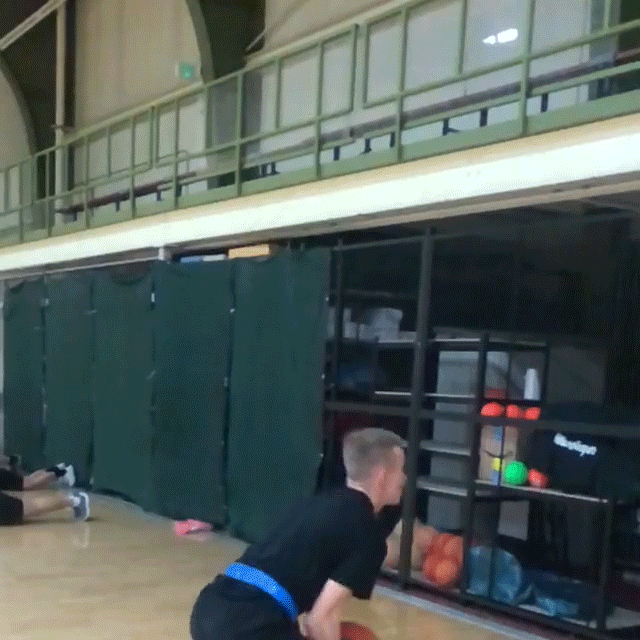
Standing Power Throw
An overhead, behind-the-back toss with a 10-pound medicine ball that represents tasks requiring quick explosive movements to maneuver equipment and personnel.
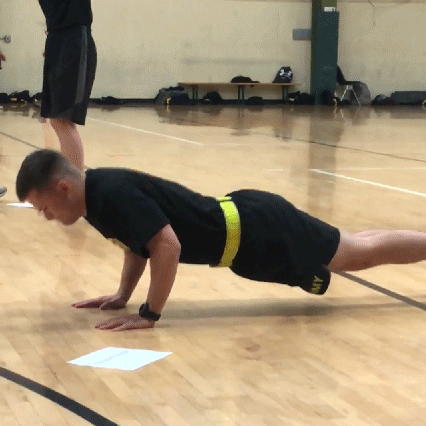
Hand Release Pushup
A two-minute upper-body endurance test that represents the repetitive and sustained pushing used in combat tasks.
Meeting the challenge
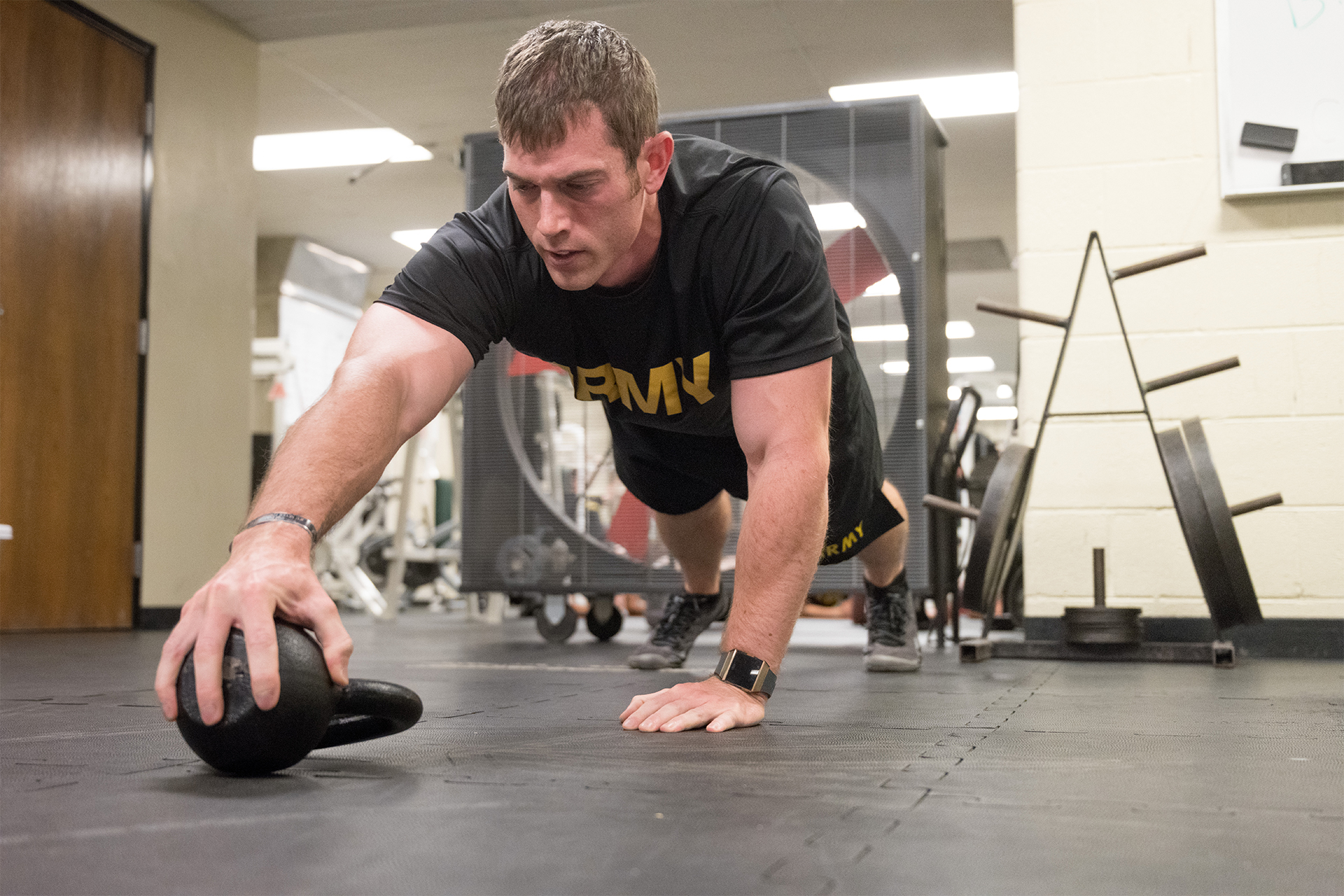
Graduate student and ROTC cadet Andrew Reynolds works out at the Moby Auxiliary Gym in preparation for the Army Combat Fitness Test. Photo by John Eisele
The new Army Combat Fitness Test consists of a series of six challenges designed to better connect certain fitness aspects with combat readiness such as strength, endurance, power, speed, agility, balance, flexibility, coordination and reaction time.
But for Army ROTC programs across the country, this presents a challenge.
An active-duty soldier can schedule four or five 70- to 90-minute training sessions in a typical week. For an ROTC cadet, Armonda said finding the time to properly train for the new fitness test can be difficult as they are first and foremost students.
In spring 2019, ROTC leadership and Armonda’s research team conducted a first-of-its-kind study comparing and contrasting several Army Combat Fitness Test training regimens.
The 10-week pilot study with 30 cadets showed strong evidence that a full-body, hybrid training approach — aerobic and anaerobic training, weight-lifting, body-weight exercises, plyometrics and high-intensity intervals — is far more effective than the traditional training regimens that focus solely on muscular endurance and aerobic exercise.
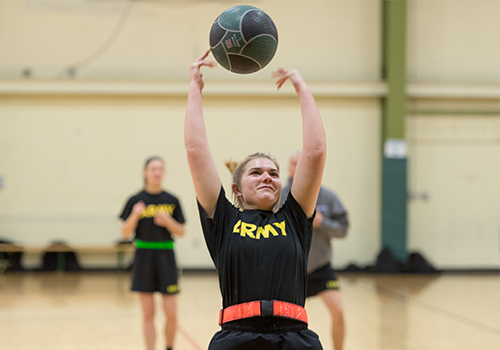
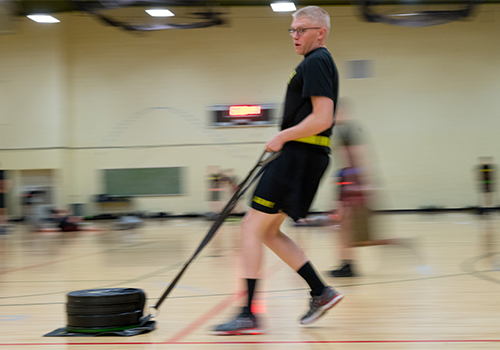
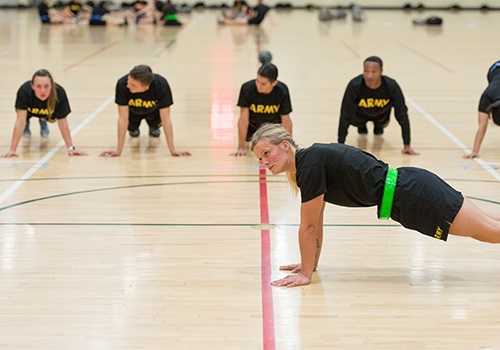
Photos by John Eisele
According to the study, cadets who followed this new prescribed regimen saw a 13% increase in their performance. The study’s end goal is to improve holistic health culture as well as provide a comprehensive leadership education, training and evaluation platform that embodies the traits required of the scholar-athlete-leader.
“The end goal is to help the cadet get maximum placement that they can get because it matters to their military career,” said Kelly Mann, interim director of the Office of Defense Engagement.
In designing the fitness regimen, the cadre sought expertise from across CSU, including advice from head assistant coach Ryan Baily, one of the top decathlon and indoor track and field coaches in the Mountain West region.
“I am impressed with the steps that ROTC has taken to better prepare their cadets physically,” he said. “I basically just provided some theories on training combined event athletes and they did an incredible job formulating functional and specific training to meet their new goals.”
Barry Braun, health and exercise science professor and executive director of CSU’s Human Performance Clinical Research Lab, added: “As a land-grant institution, this collaboration is exactly what we strive for: a research project with real-world utility to help people be better at what they do, in this case, young men and women getting ready to serve our country. This is a great partnership.”
Army Combat Fitness Test events
Three of six events to be adopted by October 2020. Animated images by Brian Dusek.
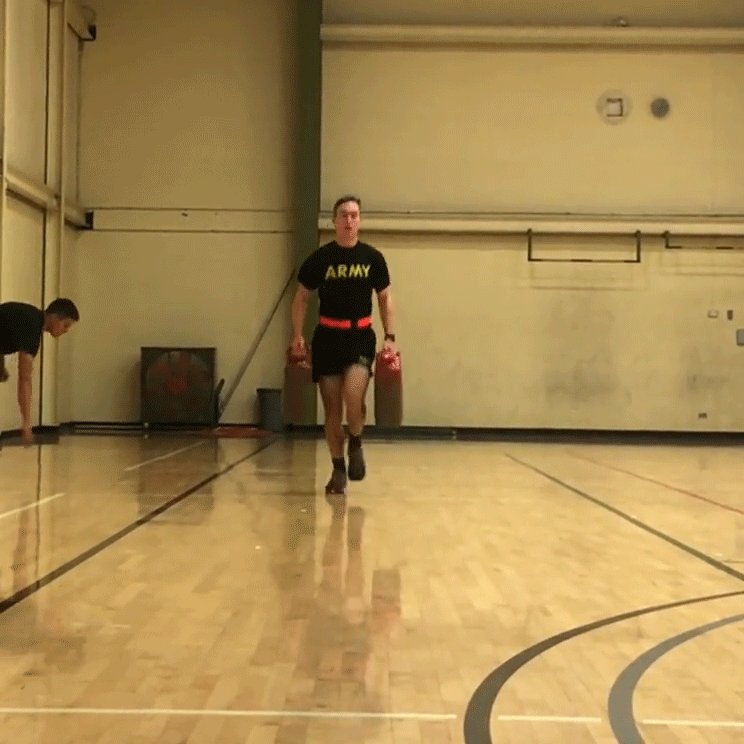
Sprint-Drag-Carry
A sprint, 90-pound sled drag, and farmer’s carry with 40-pound kettlebells represents high-intensity combat tasks.

Leg Tuck
A pull-up bar exercise that measures a soldier’s grip, shoulder, core and hip strength need to surmount a rope, wall or obstacle.

Two-Mile Run
A two-mile run for time that represents the needed endurance that may arise during ground movement.
Promoting leadership
Early morning training sessions at the Moby Auxiliary Gym have significantly changed since the pilot study.
Andrew Reynolds, an ROTC graduate student in business and computer information systems who has been in the Army for nearly 12 years, said the new program has metrics that can lead to performance results.
“We now have an actual end goal that we’re trying to get to, where in partnership with [Health and Exercise Science] and other departments, we can actually see body composition and how people are losing fat, gaining muscle and actually see scores improve as well,” said Reynolds, who also was one of the study’s authors.
The Health and Exercise Science plan focuses on muscular strength and endurance training on Mondays, high-intensity interval training on Wednesdays, and a combination of aerobic training on Fridays.
“Physical fitness is probably one of the best ways to practice your leadership. Those are aspects of leadership that we don’t get to practice in the classroom.”
— Al Armonda, instructor, Department of Military Science
Reynolds said legacy training sessions lacked structure, which could be a potential issue with the new Army Combat Fitness Test. “The ACFT is a very technical test,” he said. “You need that oversight. You need that discipline and that knowledge in order to succeed.”
Armonda added that the new ACFT extends beyond fitness as it allows the Army ROTC Officers/Enlisted cadre and upper-class cadets to serve as coaches tracking progress while providing encouragement and support.
“Physical fitness is probably one of the best ways to practice your leadership,” he said. “Those are aspects of leadership that we don’t get to practice in the classroom.”
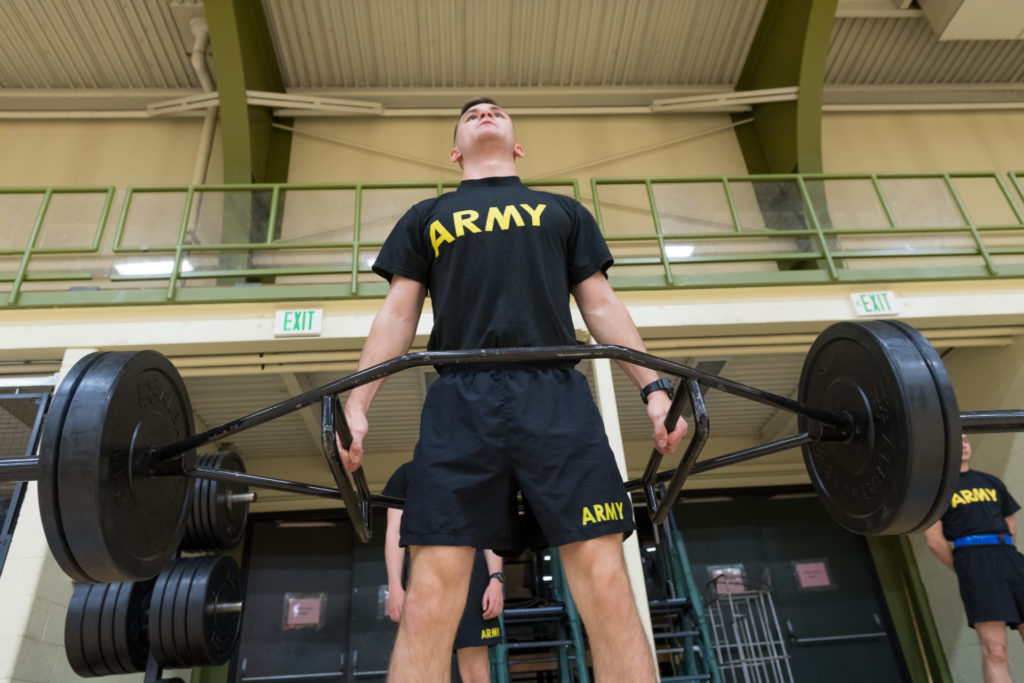
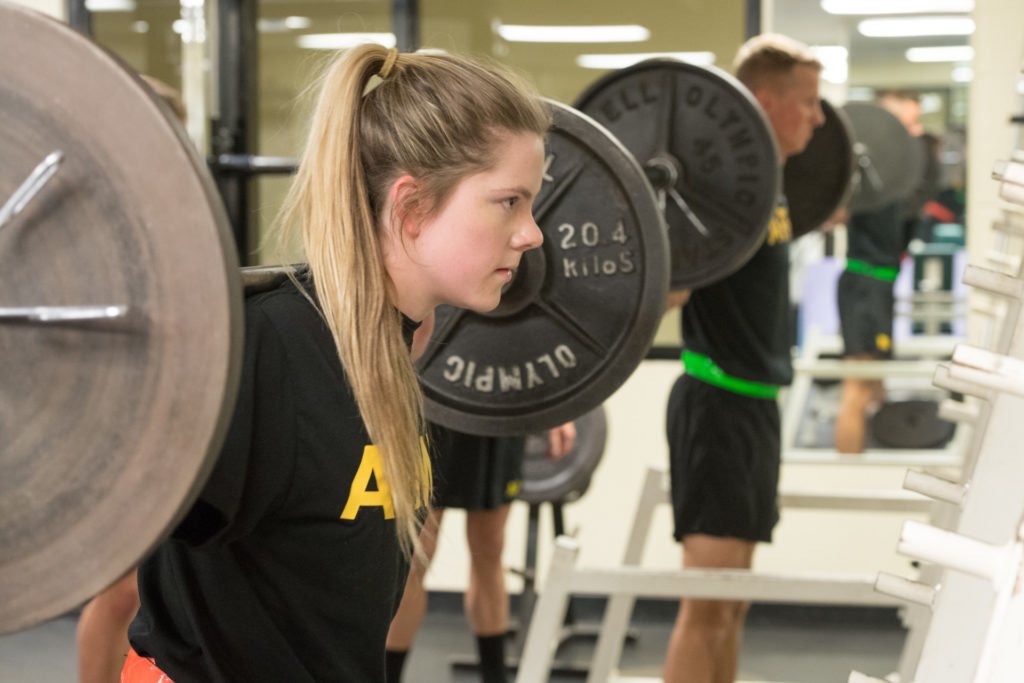
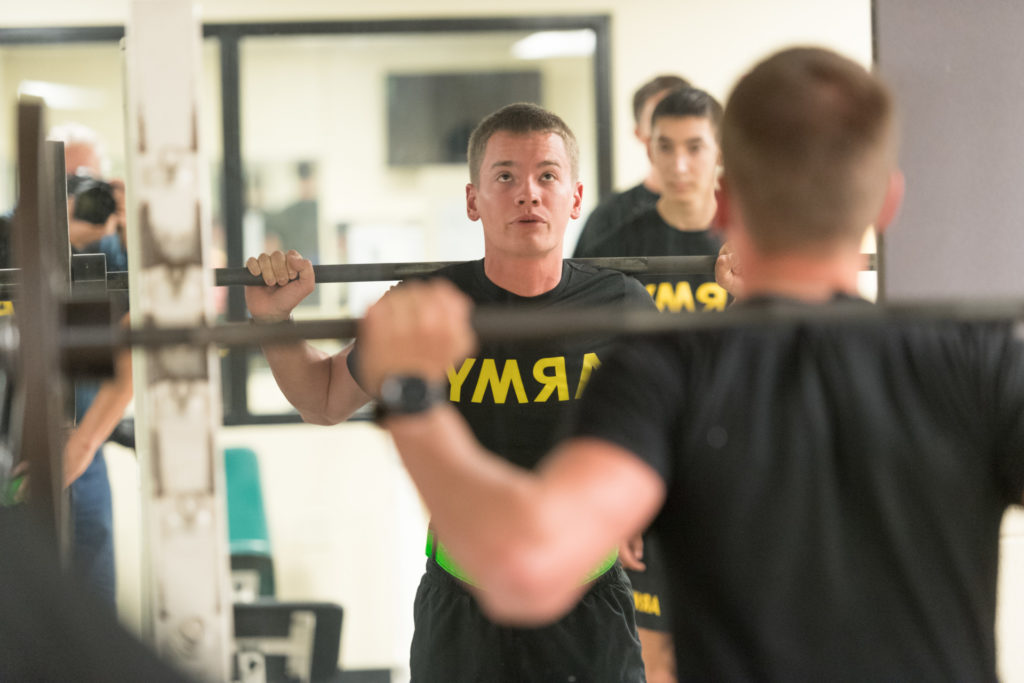
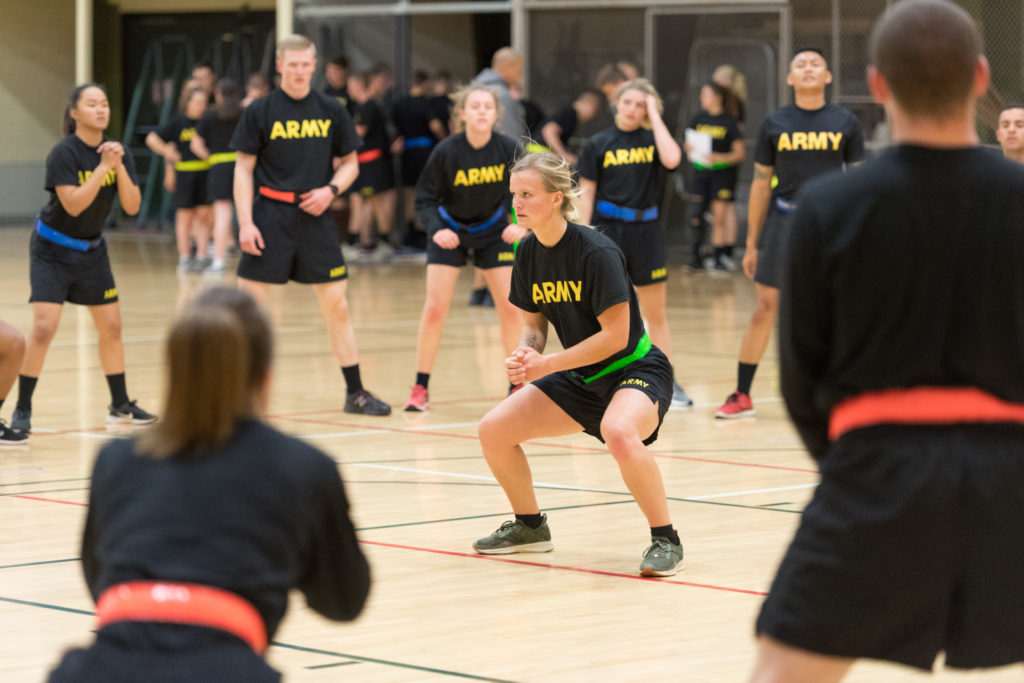
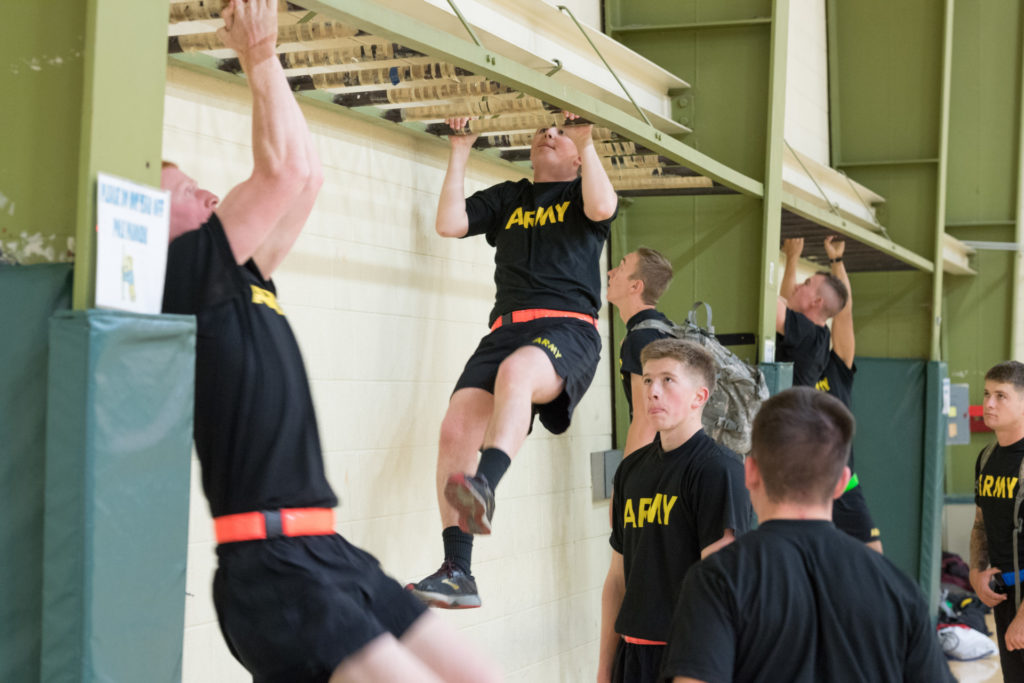
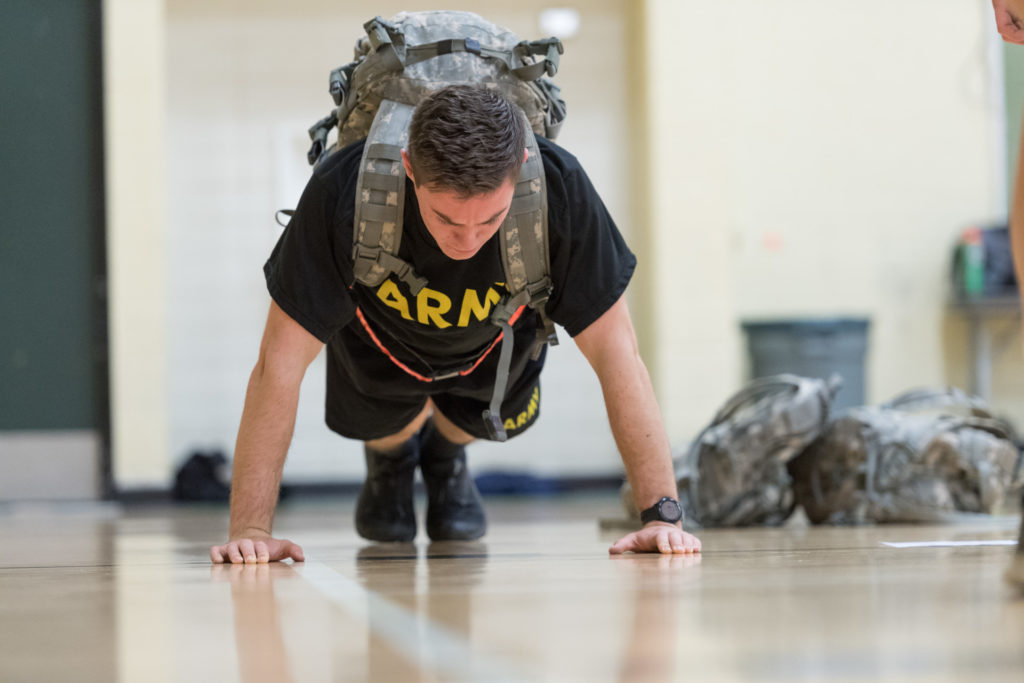
Photos by John Eisele
Growing support and future applications
Department of Defense officials recently visited CSU to observe the training program and learn how they can provide support and assistance. Additional workout equipment, some of which has already been procured, is necessary as the new test requires deadlift bars, kettlebells and pullup stations. And researchers are currently launching a more robust study with 60 cadets for more statistical power.
Armonda said that the study has additional applications beyond the Army, noting that it can also be beneficial to first responders, many of whom start their careers in the U.S. military.
“Because of the constricted time frame that we have to actually complete these fitness requirements, we think the success of this study can transfer over to law enforcement, wildland firefighters and other federal agencies,” Armonda said.
Mann shared a similar perspective, expressing his excitement with the initial results and the broader benefits of the study.
“You can see where it not only helps the individual cadet but also other universities,” Mann said. “This research has the opportunity to actually show results that would make other people comfortable in adopting for their programs with similar training time constraints.”
CSU Army Combat Fitness pilot study research team
Al Armonda
Instructor, Department of Military Science
Barry Braun
Professor, Department of Health and Exercise Science
Alissa Newman
Research associate, Department of Health and Exercise Science
Steven Garcia
Research assistant, Department of Health and Exercise Science
James Burciaga
Senior military instructor, Department of Military Science
Andrew Reynolds
Graduate student, ROTC cadet
Tracy Shultz
Research assistant, Department of Health and Exercise Science
Courtney Therrien
Undergraduate student, Department of Health and Exercise Science